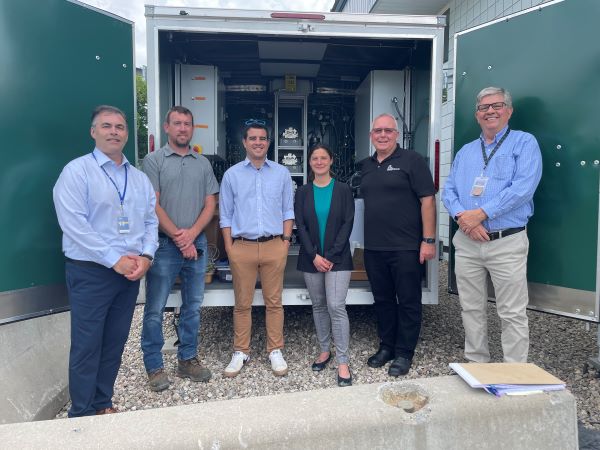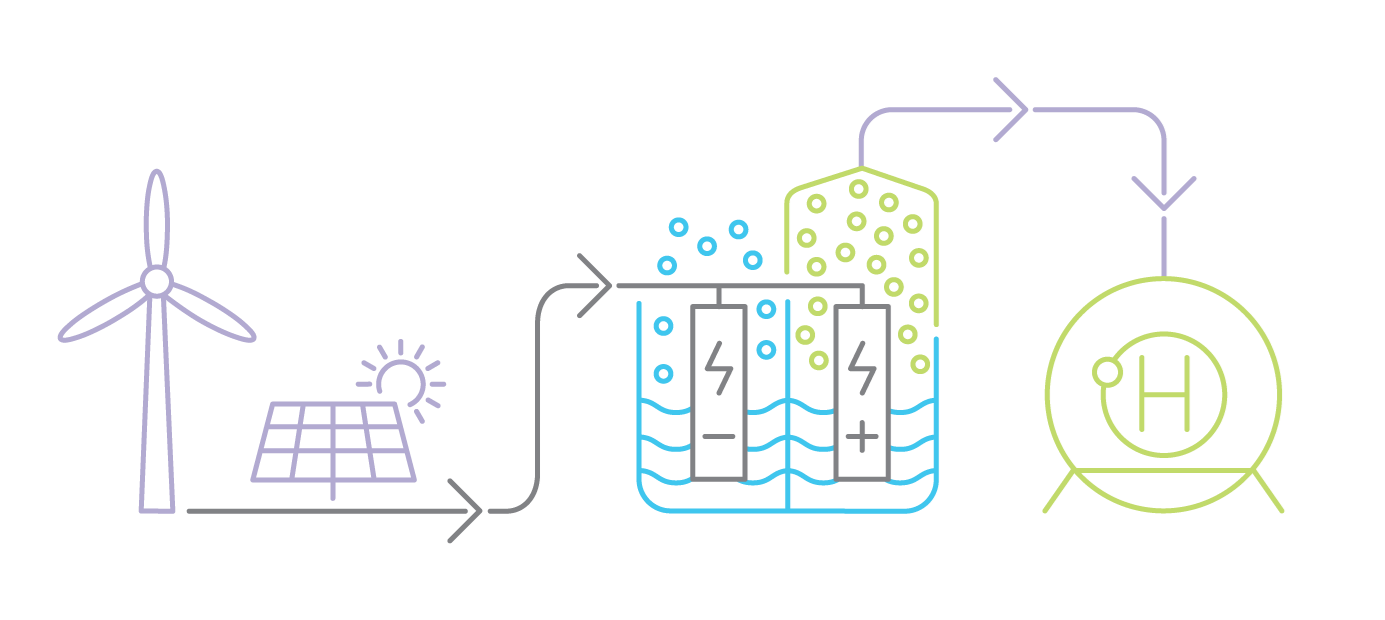
Liberty employees and project partners from Ecolectro pose for photo near now operational hydrogen equipment
Liberty – New York Gas is piloting innovative electrolyzer technology and providing hydrogen to their local office. This advanced technology, which is now operational at their Massena New York office, provides another approach for Liberty on its journey to meeting decarbonization and sustainability goals.
For this project, Liberty partnered with Ecolectro, an electrolyzer technology company based right in Ithaca, NY, Campos Fabrication, and New England Controls, Inc. (NECI) for the design, construction and startup of the blending test equipment. The project will demonstrate how the electrolyzer technology, combined with blending equipment, can provide renewable energy to a property in a sustainable way.
The Electrolyzer will be located outside of the local Liberty Massena office and create Green Hydrogen, which will then be blended back into the office’s natural gas supply to provide the building heat. By utilizing the hydrogen generated on site and blending it into a dedicated section of the natural gas infrastructure, Liberty will be utilizing clean hydrogen to heat their office building for the lifetime of the pilot.
This initial pilot phase is slated to run for 18 months. Ecolectro and Liberty have also begun outlining two additional phases of this project, which will lead to the deployment of a 1MW commercial electrolyzer. A special thank you is extended to Campos Fabrication and NECI for donating their technical expertise and equipment to support this project.
“This project is just one of the ways Liberty is aiming to bring clean energy to our customers in a sustainable way,” said Mark Saltsman, General Manager and President of Liberty New York Gas. “Energy will look much different 50 years from now, and we are critical participants in this transformation.”
In addition to the countless benefits of utilizing Green Hydrogen, Liberty is also committed to supporting the goals of the New York Climate Leadership and Community Protection Act (CLCPA) by evaluating this pilot closely.
“Our net-zero by 2050 goal is deeply rooted in our culture and reflects our track record of being a leader in the transition to a low-carbon economy,” said Saltsman. “Getting involved with a clean hydrogen pilot program is just the type of innovative project that will help get us there.”
The illustration below shows the process of creating clean hydrogen utilizing water and renewable electricity. Once the hydrogen and oxygen from the water are separated through electrolysis, the clean hydrogen can be used for heating, stationary fuel cells and transportation.


